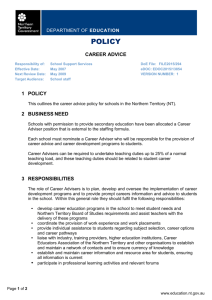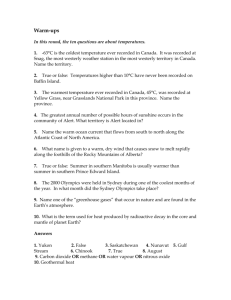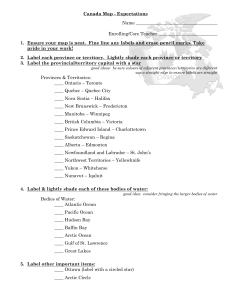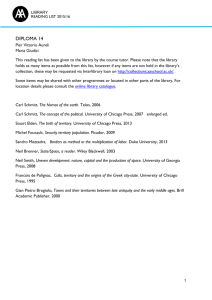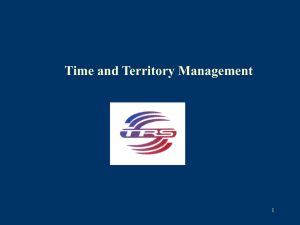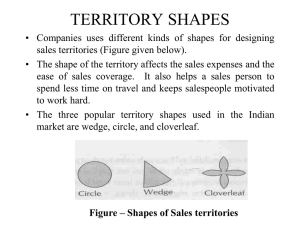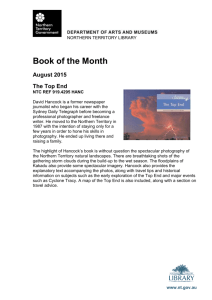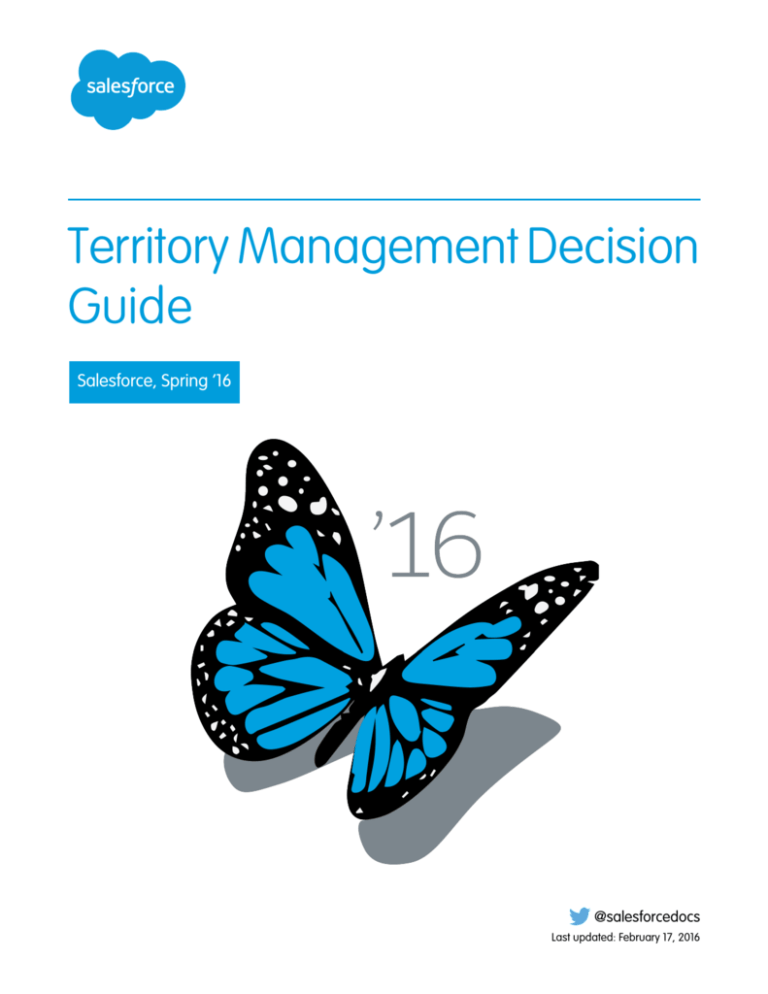
Territory Management Decision
Guide
Salesforce, Spring ’16
@salesforcedocs
Last updated: February 17, 2016
© Copyright 2000–2016 salesforce.com, inc. All rights reserved. Salesforce is a registered trademark of salesforce.com, inc.,
as are other names and marks. Other marks appearing herein may be trademarks of their respective owners.
CONTENTS
TERRITORY MANAGEMENT DECISION GUIDE
.........................1
Preface . . . . . . . . . . . . . . . . . . . . . . . . . . . . . . . . . . . . . . . . . . . . . . . . . . . . . . . . . . . . . 1
Introduction to Territory Management . . . . . . . . . . . . . . . . . . . . . . . . . . . . . . . . . . . . . . . . 1
The Territory Management Feature . . . . . . . . . . . . . . . . . . . . . . . . . . . . . . . . . . . . . . . . . . 2
Salesforce Territory Management Decision Tree . . . . . . . . . . . . . . . . . . . . . . . . . . . . . . . . . 4
Scenarios . . . . . . . . . . . . . . . . . . . . . . . . . . . . . . . . . . . . . . . . . . . . . . . . . . . . . . . . . . . 5
Platform-Based Solutions . . . . . . . . . . . . . . . . . . . . . . . . . . . . . . . . . . . . . . . . . . . . . . . . 9
Disabling Territory Management . . . . . . . . . . . . . . . . . . . . . . . . . . . . . . . . . . . . . . . . . . . 10
TERRITORY MANAGEMENT DECISION GUIDE
Preface
This document outlines the factors and tools, including the Salesforce Territory Management feature, you should consider when organizing
and allocating your organization’s sales responsibilities, and when attempting to meet your other territory hierarchy- and territory
management-related business requirements.
It contains:
• An overview of the Territory Management feature
• A decision tree you can use to determine whether this feature fits with your organization’s business needs
• Scenarios showing how you can use the decision tree to find the most appropriate territory management solution
• An introduction to alternative, platform-based territory management solutions
• Things to be aware of if you need to disable Territory Management.
Audience
This document is intended for expert Salesforce architects working on implementations with complex territory management requirements
or large-scale sales organization realignments.
Information in this document applies only to Territory Management 1.0. It doesn't apply to Territory Management 2.0, which can be
enabled starting in the Summer '14 release.
Assumptions
This document assumes you understand basic territory management concepts, and Salesforce administration and security.
Introduction to Territory Management
Territory management is the process of allocating sales responsibilities across an organization.
You can use territory management to:
• Better cover your organization’s sales territories
• Reduce selling costs
• Improve customer service
• Accurately measure how your organization’s sales teams are performing
You can use the Salesforce Territory Management feature to:
• Allocate sales responsibilities based on account-level attributes
• Create and define a territory hierarchy, which doesn’t replace your role hierarchy
See “Territory Management” in the Salesforce Help.
1
Territory Management Decision Guide
The Territory Management Feature
The Territory Management Feature
When thinking about territory management, it’s natural to assume that you need to use the Territory Management feature to model
your territory hierarchy and manage your territory assignments. This assumption might be true for some customers in some situations,
but all customers should consider this feature one option among the rich Salesforce feature set for meeting territory management
requirements.
Territory Management is available only for organizations that use Customizable Forecasting; Territory Management is not supported for
organizations that use Collaborative Forecasts. If Salesforce Customer Support enables Territory Management for your organization, your
organization cannot use Collaborative Forecasts. For these reasons, enable, implement, and test Territory Management in a sandbox
environment before enabling it in production. See “Enable Territory Management” in the Salesforce Help.
When architecting a territory management solution, consider the following to determine whether Territory Management is a good fit
with your organization’s business requirements.
• Forecasting
• Rule source
• Sales structure
• Rule complexity
• Sharing performance
These topics appear with the same names and in the same order in the Salesforce Territory Management decision tree, where they align
with the key questions that you should consider when deciding whether to request Territory Management and enable it in your
organization.
Forecasting
You can manage your forecasts with Salesforce Collaborative Forecasts or Salesforce Customizable Forecasting, or you can manage your
forecasts outside of Salesforce altogether.
Of the Salesforce forecasting engines, only Customizable Forecasting is compatible with Territory Management, and you must use and
enable Customizable Forecasting to use Territory Management. After enabling Customizable Forecasting, you can forecast only by using
Customizable Forecasting or by going outside of Salesforce.
Weigh the benefits of each forecasting option before committing to any one of them. See “Enabling Customizable Forecasting” in the
Salesforce Help.
Note: You do have the option of rolling out Territory Management in Salesforce while forecasting in an external system. Then,
during a future release, you can move your forecasting process into Salesforce for tighter integration.
If you plan to forecast in Salesforce, and Customizable Forecasting does not meet your business requirements, consider both contacting
your Salesforce account executive to discuss your forecasting options and using an alternative to Territory Management.
Rule Source
Some architects manage their territory assignments outside of Salesforce to deliver a sales solution that’s shared across their organizations.
Using the API to assign territories from an external Single Source of Truth (SSOT) can improve sharing performance and allow large
enterprise organizations to smoothly scale to even bigger sizes. If your organization is one of those enterprise organizations, you don’t
need to store your assignment rules in Salesforce, and you don’t need to worry about the complexity of those rules when deciding
whether to request Territory Management and enable it in your organization.
2
Territory Management Decision Guide
Sales Structure
If your organization manages an external SSOT for territory assignments, you can decide whether you should enable Territory Management
based on:
• Sales structure
• Sharing performance
Alternatively, if your organization manages its territory assignment rules inside Salesforce, you can decide whether you should enable
Territory Management based on:
• Sales structure
• Rule complexity
• Sharing performance
Sales Structure
The possible benefits of Territory Management depend upon your organization’s sales structure.
If your organization needs a matrixed record access model, it can benefit from Territory Management, which allows representatives to
belong to multiple territories, or it can use public groups to create a similar sharing abstraction. If your organization enables Territory
Management, its sales representatives can submit multiple forecasts to multiple managers.
If your organization needs its sales data to roll up differently than its other data, it can benefit from Territory Management, which allows
it to define a separate hierarchy for controlling access and forecast rollup for sales data.
If your organization needs to be able to scale to accommodate large numbers of territories, consider alternative territory management
options, such as the team- and public group-based solutions.
Rule Complexity
Territory Management can significantly reduce the complexity of your sharing architecture customizations if you base your territory
management decisions on account-level attributes, and if you use the feature’s account assignment rules.
If your organization defines its territories based on records related to the account object, and if these records are in master-detail
relationships with accounts, you can use rollup summary fields to bring those detail records’ attributes to their master accounts. You
can use triggers to move related data into accounts, allowing you to also use standard account assignment rules, but this strategy might
not work as your organization grows in size. As the relationships between that data and those accounts become more complex, your
sharing performance might degrade, and you might need a customized territory management solution.
Salesforce account assignment rules have limitations regarding the number of rules you can create, the criteria you can include in those
rules, and the complexity those rules can have. While the existing Salesforce rule structure is sufficient for many customers, others push
Salesforce beyond its limits and need a customized solution.
Note: Territory Management natively supports assignments for only accounts and opportunities. To assign additional types of
object records—such as leads, orders, or custom object records—you must make significant customizations to your organization.
Sharing Performance
If your organization drives large volumes of data using dynamic, frequently changing territories, it can benefit from Territory Management’s
grouping concept.
Grouping offers two main sharing benefits.
• Grouping can improve the performance of your organization’s sharing architecture, especially if your organization associates multiple
representatives with each of its territories. Without grouping, you must move each member within a territory individually, which
3
Territory Management Decision Guide
Salesforce Territory Management Decision Tree
can take significantly more time than moving an entire territory as a unit. For example, if your territories have five members on
average, using Territory Management means maintaining 80 percent fewer sharing records.
• Grouping can also reduce the burden placed on your organization’s administrator. If your organization has groups of users sharing
the same type of record access, managing each of those user’s access individually involves a lot of maintenance. By grouping these
users into territories, you can shift your territories’ record access and maintain it as a unit.
See A Guide to Sharing Architecture.
Salesforce Territory Management Decision Tree
You can use this decision tree to determine whether you should request Territory Management and enable it in your organization.
The tree features most of the major questions that you should consider, but you might encounter factors that make your decision-making
process less organized and less straightforward. If you do find yourself unsure about which direction those factors point you in, contact
your Salesforce account executive.
Your account executive can help you determine:
• Your best possible architecture base, given the current Salesforce features
• How Territory Management fits with your organization’s territory management needs
4
Territory Management Decision Guide
Scenarios
Salesforce Territory Management Decision Tree
Scenarios
In each of the following scenarios, an organization uses this guide’s decision tree to determine how to meet its territory management
needs.
• Scenario #1: Minimizing customizations of the sharing architecture
• Scenario #2: Forecasting in an external system
5
Territory Management Decision Guide
Scenario #1: Minimizing Customizations of the Sharing
Architecture
Scenario #1: Minimizing Customizations of the Sharing Architecture
Organization A is very focused on minimizing customizations to its sharing architecture, and it wants to stick to the core Salesforce
features available for managing territories. Organization A knows that it wants to forecast in Salesforce, and after reviewing its forecasting
options, it decides that Customizable Forecasting fits well with its business requirements.
Sharing Model for Accounts
Organization A has 200,000 accounts, which it frequently realigns, and it bases its account assignments strictly off of account-level
attributes. While Organization A’s territory rule structure can be modeled after Salesforce standard account assignment rules, its named
accounts have very complex requirements that cannot be accommodated by those rules. Even though each of its sales representatives
exists in only a single territory, Organization A requires a complex record access and forecasting model for sales data that it doesn’t
require for the other data in its Salesforce organization.
Path through the Salesforce Territory Management Decision Tree
1. Are you going to forecast in Salesforce?
Organization A knows that it wants to forecast in Salesforce, so the answer is “yes.”
2. Does Customizable Forecasting meet your business requirements?
Organization A knows that Customizable Forecasting fits well with its forecasting requirements, so the answer is “yes.”
3. Will any representatives need to submit forecasts to multiple managers?
Organization A aligns only a single territory for each sales representative assigned to a territory, so the answer is “no.”
4. Does sales data need to roll up differently than other data?
Organization A has a complex sales structure for its accounts and opportunities, but the other records in its sharing architecture
don’t have the same complex record access requirements. Using Territory Management would allow Organization A to manage the
more complex territory hierarchy for its salespeople while still leaving a simpler role hierarchy in place for the rest of its organization.
The answer is “yes.”
6
Territory Management Decision Guide
Scenario #2: Forecasting in an External System
Organization A’s Path through the Salesforce Territory Management Decision Tree
Conclusion
Organization A would benefit from the Territory Management feature.
Scenario #2: Forecasting in an External System
Organization B has forecasting requirements that are too complex and specialized for Salesforce Collaborative Forecasts or Customizable
Forecasting, so it decides to forecast in an external system.
7
Territory Management Decision Guide
Scenario #2: Forecasting in an External System
Sharing Model for Accounts
Organization B has 400,000 accounts, which it frequently aligns, and it bases its account assignments on:
• Account-level attributes
• Certifications that are custom child objects of the accounts
• Postal codes that are not in contiguous ranges
Organization B has sales representatives who are assigned to multiple territories, and it forecasts opportunities up to multiple managers.
It will use Salesforce as its system of record for account data, as well as for the territory assignment engine and assignment rules.
Path through the Salesforce Territory Management Decision Tree
1. Are you going to forecast in Salesforce?
Organization B’s forecasting process is too specialized for the existing Salesforce forecasting tools, so the answer is “no.”
2. Do you have a Single Source of Truth outside of Salesforce?
Organization B does not use an external SSOT for territory management, so its rule structure and assignment engine will exist inside
Salesforce. The answer is “no.”
3. Does your sales organization need matrixed access or have sales representatives in multiple territories?
Organization B has representatives who need to forecast up to multiple managers. These representatives must be assigned to
different territories in the territory hierarchy, so the answer is “yes.”
4. Is your territory’s definition based on account attributes?
While certain attributes defining territory management for Organization B are based on account attributes, accounts’ associated
records might also drive criteria. In some cases, triggers can roll criteria up to the account so standard rules can be used. However,
in this example, assume that this rollup is not possible. The answer is “no.”
5. Do you have dynamic territories with large data volumes?
Organization B frequently realigns its 400,000 accounts. This number might seem large, but Salesforce has customers who realign
over 60 million accounts. For the Salesforce Territory Management decision tree, consider that an organization with more than
200,000 accounts has large data volumes. The answer is “yes,” Organization B does have dynamic territories with large data volumes.
8
Territory Management Decision Guide
Platform-Based Solutions
Organization B’s Path through the Salesforce Territory Management Decision Tree
Conclusion
Organization B would also benefit from the Territory Management feature.
Platform-Based Solutions
Even if the Territory Management feature doesn’t meet your current territory management requirements, you can still take advantage
of the following platform-based solutions.
• Team-based territory management
• Public group-based territory management
9
Territory Management Decision Guide
Team-Based Territory Management
• Criteria-based territory management
Team-Based Territory Management
Team-based territory management uses accounts and sales teams to define responsibilities across a sales organization. Team-based
territory management works as an alternative to the Territory Management feature when territory assignments affect only accounts and
opportunities. Other types of records, such as leads and custom object records, don’t use teams.
Record access is tied directly to the role hierarchy, so all users assigned to a role in your organization share the same record access
hierarchy. If you do your forecasting in Salesforce, your forecasts roll up the hierarchy as well.
Note: Account teams and sales teams don’t have automated assignment engines or rule structures, so you can assign objects
manually, through custom code and a custom assignment engine, or through the API from an external rules engine.
Public Group-Based Territory Management
Public group-based territory management uses Salesforce public groups to define teams associated with accounts, opportunities, leads,
and other types of records. You can nest public groups to establish a record access hierarchy separate from your role hierarchy, but your
forecasts won’t roll up the public group’s hierarchy.
Public groups don’t have the same 99,999-groups limit as Territory Management, but your organization might have a slower sharing
performance if either of the following are true.
• Extremely large numbers of users are nested into public groups, which are themselves nested into other public groups.
• Grant Access Using Hierarchies is selected for your custom objects. See “Controlling Access Using Hierarchies” in
the Salesforce Help.
Because territories generally have no more than 10–20 members, the first condition shouldn’t present problems for most organizations.
Note: Like account teams and sales teams, Salesforce public groups don’t have an automated assignment engine or rule structure,
so you can assign objects manually, through custom code and a custom assignment engine, or through the API from an external
rules engine.
Criteria-Based Territory Management
Criteria-based sharing territory management uses criteria-based sharing rules to define responsibilities across a sales organization. Because
of the limited number of criteria-based sharing rules available per object, only use criteria-based territory management if your organization
is small. See “Assignment, Auto-Response, and Escalation Rules Limits” in the Salesforce Help.
You can use criteria-based sharing rules to automate the assignment of public groups or role-based teams.
When you assign objects to:
• Public groups, you can create a visibility hierarchy that’s independent of your role hierarchy
• Role-based teams, all users in your Salesforce organization share the same record access hierarchy
In both cases, if you use Customizable Forecasting, your forecasts will roll up the role hierarchy.
Disabling Territory Management
As of Spring '14, organizations that use Territory Management can disable the feature if necessary. Note that when Territory Management
is disabled, its configuration and sharing records are retained for use as a backup in the event that Territory Management ever needs to
be re-enabled. The retained configuration is ignored and will not affect record visibility.
10
Territory Management Decision Guide
Disabling Territory Management
The retained shares can have a minor performance impact on your organization's sharing calculations. As a result, we recommend that
you remove your Territory Management configuration prior to disabling the feature if you are certain you will not need to re-enable it
in the future. Deleting the territories themselves will clean up all of the Territory Management feature's configuration and associated
sharing records. Depending on the number of territories you have, this process might take some time, and is best done during non-peak
hours. Large organizations should first clean up Territory Management rules and sharing records before deleting territories, to minimize
the duration of group membership locks.
To disable Territory Management for your organization, contact salesforce.com Customer Support.
11



